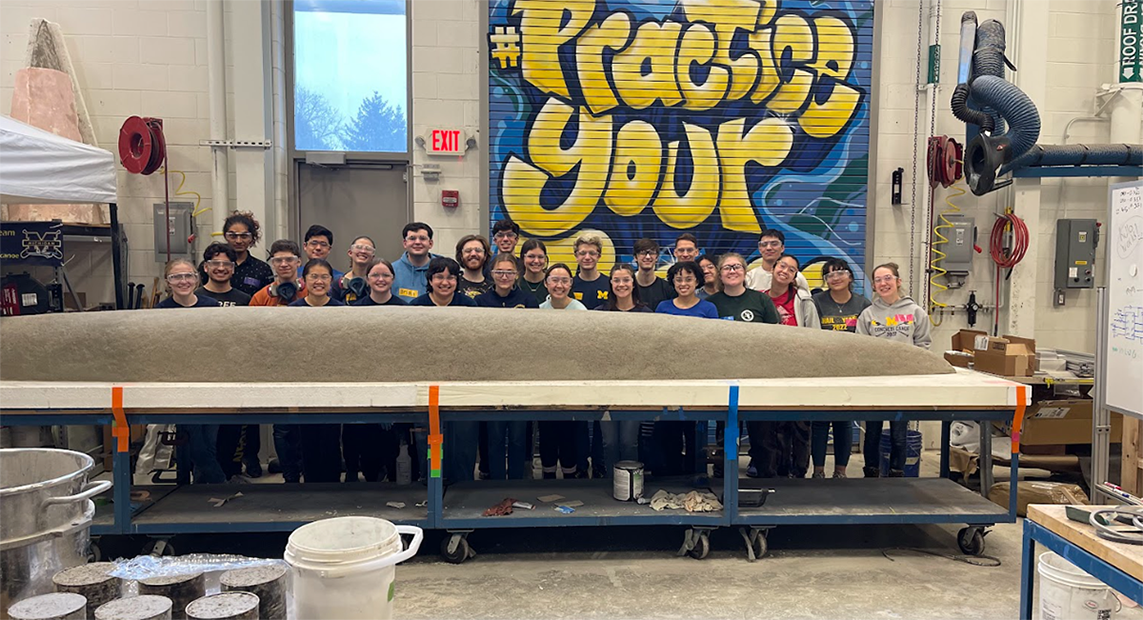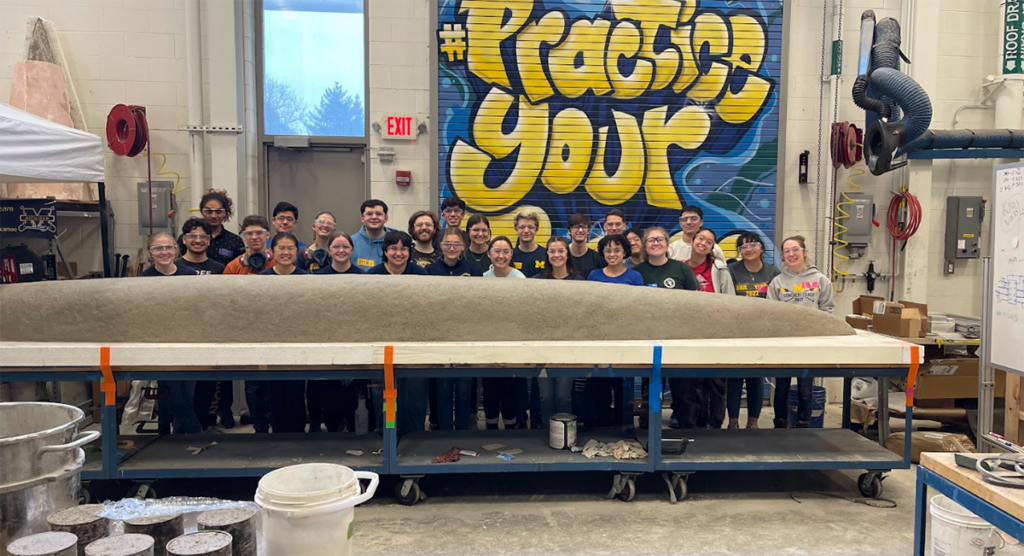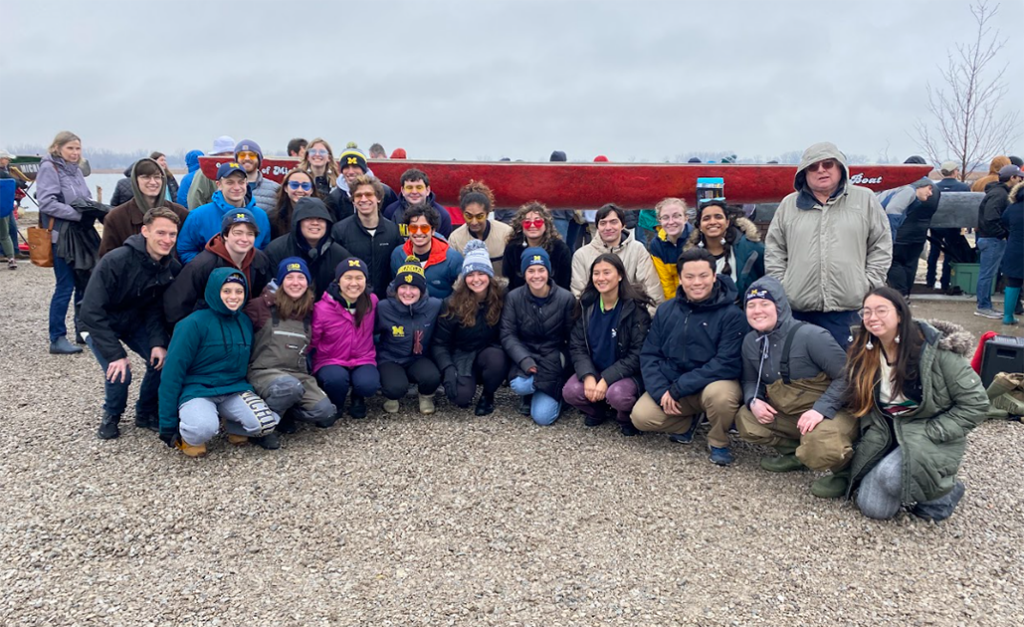
Putting concrete’s floatation abilities to the test
Chemical Engineering students help the Michigan Concrete Canoe Team place third overall at regionals.

Chemical Engineering students help the Michigan Concrete Canoe Team place third overall at regionals.
Although not commonly known to float, an interdisciplinary team of students designed, fabricated, constructed and decorated a canoe made entirely of concrete to compete in the American Society of Civil Engineers (ASCE) Concrete Canoe Competition this spring, placing third overall at the regional competition.
The team, including three Chemical Engineering students, also took home a first-place award for their technical presentation, a second place award in project proposals and a third place award in paddling.
As part of the ASCE Concrete Canoe competition, teams come together to demonstrate their design, construction and paddling of their collaboratively constructed canoe.
The Michigan Concrete Canoe Team (MCCT) is composed of students from several different disciplines including chemical engineering, civil engineering, mechanical engineering, environmental engineering, art and design and others.
“While my peers on the concrete design team have a strong base of civil engineering knowledge, I think knowledge in chemical engineering has also been very valuable to MCCT,” Chemical Engineering student and Assistant Mix Design Lead, Song Kim said. “One thing that’s really cool about the design process at MCCT is seeing the different disciplines like chemical, civil, material and environmental engineering come together to work on this project.”

Paddling Lead Kate Ceccacci shared that her chemical engineering background has helped her make more informed problem-solving decisions that have helped the team overcome obstacles.
“Concrete undergoes a hydrolysis reaction in a batch process. These are concepts that are learned in organic chemistry and reactor engineering and design,” Ceccacci said. “The problem-solving skills learned through the engineering curriculum are also very beneficial to forming solutions to the challenges faced by the team.”
MCCT has a seemingly simple goal, yet the steps to reaching it are pretty complex. Hard work and dedication are vital components with creating the canoe, and the goal cannot be completed without motivated and welcoming team members.
While a background in engineering may be helpful to the team’s construction of the canoe, the club says that a major in the field is not necessary, as all types of talents are welcome and needed. The team is organized in a way that maximizes productivity and collaboration.

“There are different subteams to support a specific goal in the process,” this year’s treasurer and Chemical Engineering student, Stacey Zeng said. “The most exciting part is seeing everything come together as a result of each subteam’s efforts and overall project management.”
This sense of community is not uncommon for members to appreciate while being a part of the team. Many members feel as if the people they meet and the team’s way of going about activities really makes for a great experience.
“I think what encouraged me to join the most was the culture at MCCT and how welcoming they were toward new members,” Kim said. “I was able to get some cool experiences early on in the team and I really liked the team dynamic of MCCT.”
While the next regional competition is not until March 2024, the team is excited to welcome new team members in the fall.
Current members encourage interested students to visit the MCCT website and visit their booth during Festifall in September. Interested students can also contact the team via email at [email protected], or visit the team’s Instagram page for more information.
MCCT relies on funding through numerous different generous sponsors who donate both money and material supplies. Donors can contribute directly and find more information regarding supply donations on the team’s website.